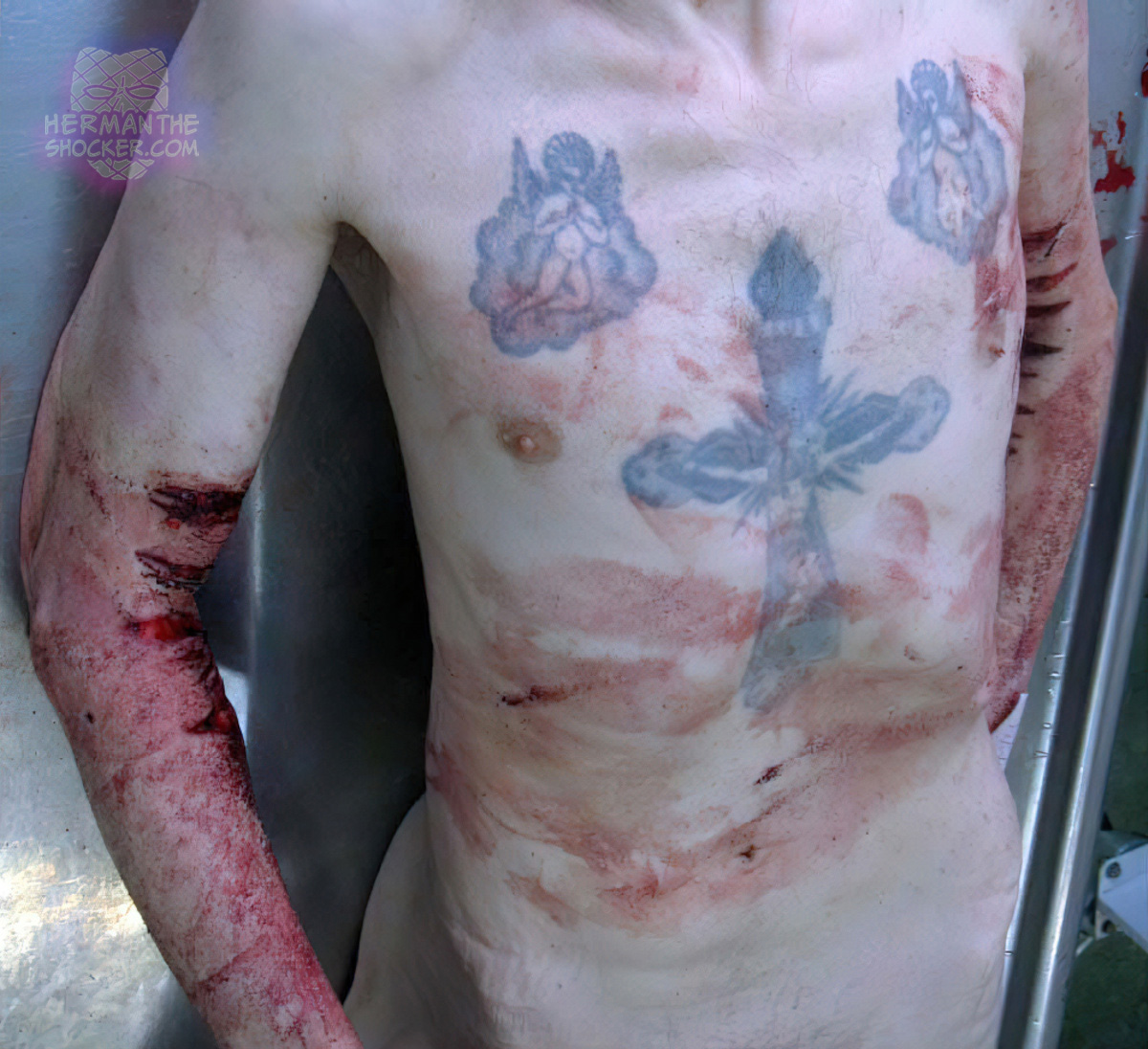This individual committed suicide by cutting deep wounds into his arms and bled out. Self-inflicted sharp-force injuries, including cutting the arms, are a recognized method in suicidal and parasuicidal behavior. However, deep, fatal incised wounds to the arms are relatively uncommon in completed suicides. More frequently, non-fatal self-cutting is associated with self-harm or suicide attempts rather than completed suicides.
From a forensic perspective, superficial hesitation marks (tentative cuts) often precede deeper, fatal wounds. These are commonly observed on the wrists, forearms, or inner elbows, where major blood vessels like the radial and ulnar arteries are located. However, exsanguination (bleeding out) through these vessels is not always rapid, and survival is possible if medical intervention occurs in time. The method is often chosen due to accessibility and cultural or psychological factors, including a history of self-harm.
In contrast, deeper incisions involving major arteries (e.g., brachial artery) increase lethality. Forensic differentiation between suicidal and homicidal cuts relies on wound characteristics—suicidal cuts are typically parallel, uniform in direction, and located on accessible body parts. Homicidal wounds often show irregularity, defensive injuries, or unnatural positioning. Overall, while cutting the arms is a noted suicide method, its effectiveness is lower compared to methods like hanging or firearms, making it more prevalent in attempts rather than fatalities.
Latest posts










